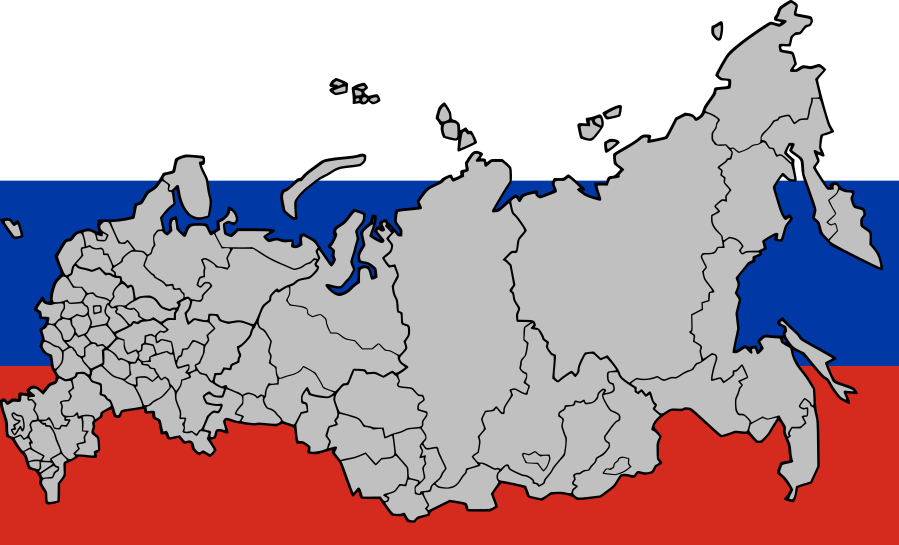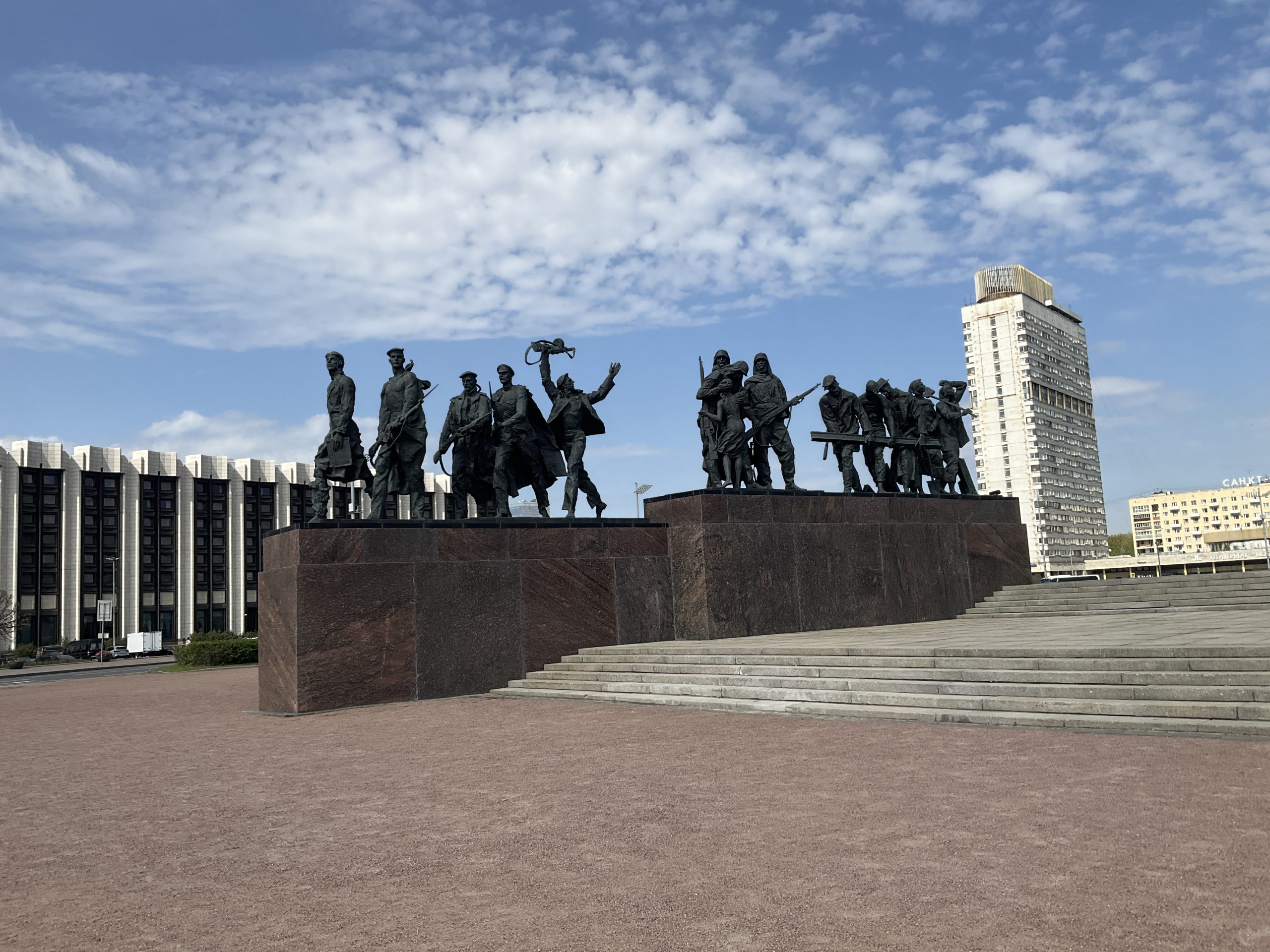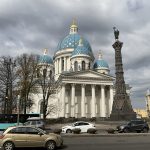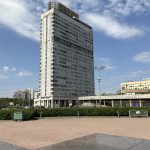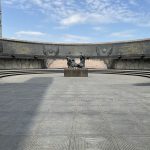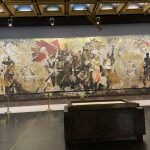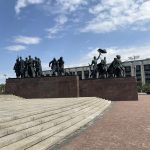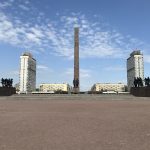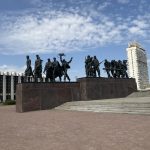Some of the things I noticed repeatedly that it seems the Russian people must love are:
Red:
They have red on the flag, but also white and blue. Why don’t they care about those colors?
There are red store signs, red outfits, red trains, red everything.
The primary color of Aeroflot and Rossiya airlines both is red, the stewardesses have red uniforms. Although, I did notice the last flight I had, they had more of an orange-red shoes, but maybe the light was messing with my eyes.
This may seem to be a simple leftover from the Soviet days, after all the Soviet flag was primarily red, but I think it could have gone back all the way to the beginning. Rus may have originally meant “red.”
War memorials:
Just about everywhere I went, there would be an included WWII memorial to the soldiers. Nearly every park, no matter how small, would have at least a statue or plaque somewhere.
Parks:
Okay, everyone likes them, but they have so many. One park will abut another park.
They might just have the median of a road with grass, trees, and benches. Barely wider than having another lane.
Cobblestones:
Many streets and some sidewalks were made of cobblestones. Considering that they are just bricks that are made to be rounded on top, and could just as easily be flat, this seems ridiculous. Flat bricks would be so much easier to walk or drive on.
Big lips:
I saw hundreds of women everyday that have had lip injections. I thought this was just an American problem.
Not just to have some definition or get a bit plumper, but full on fish lips.
So gross.
Western styles:
I heard American pop and country music being played on radios and in stores. Not once did I hear any Russian singing, although I did hear some Arabic.
The restaurants are mostly American and European foods (if you exclude the kebab and schwarma stands). KFC and Burger King are rampant, as well as Coke and Fanta.
Shoes, clothing, and handbags are American and European brands. Interestingly, almost every brand is using the original Latin characters, not the Cyrillic that they are able to read. I’m not certain I saw any shirts with Cyrillic, other than work shirts. All “tourist”shirts were English, primarily American city names, New York, Boston, Los Angeles, Dallas, or they were Disney merchandise. You know darn well they never went to any of those places, possibly don’t even know where the city is.
